08/29/2013
Friday was our last full day in the islands, as Saturday involved an early-morning wake-up call so that we could all spend half the day traveling back to ecuador. Our last day took us out to genovesa island, which is completely covered in various seabirds, including the red-footed booby. Not only do these have red feet rather than blue, but they are the only boobies with prehensile feet, so that they can perch in trees (blue-footed boobies get their foot color from eating oysters. Red-footed boobies get their foot color from eating squid).
We also saw frigate birds, which remind me of nothing so much as a disney villain (or villain’s henchman). Appropriate, given that their main means of collecting food and nesting materials involves stealing it from other birds who’ve done all the work. Other sightings included a really cool owl, more sea lions (of course), more swallow-tailed gulls, a yellow-crowned night heron, a grey pelican, and as always, more nazca boobies. I think if I keep typing “boobies” my whole site is going to end up caught in a giant spam filter.
Our morning and afternoon hikes were both on Genovesa, on different parts of the island, and it was probably the toughest walk of the trip – the first area involved climbing up some giant lava steps, and then having to climb down them again, and the afternoon involved walking over very sharp uneven lava the whole way. so…fun!
Since it was my last day, I took twice as many photos as usual, and couldn’t pick my favorites, so I apologize in advance for the repetition. Be happy that I got down to less than 40 pics out of the almost 600 shot.
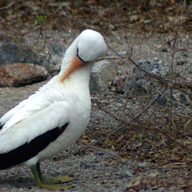
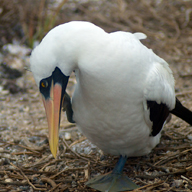
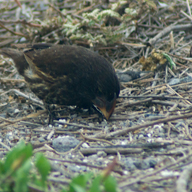
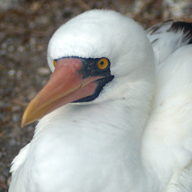



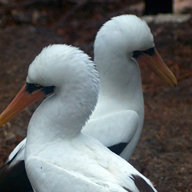
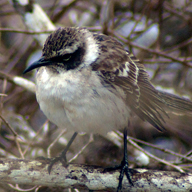

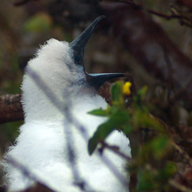

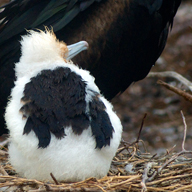

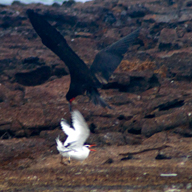

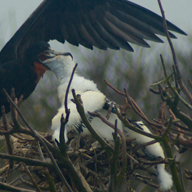
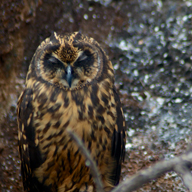



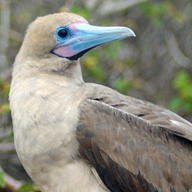
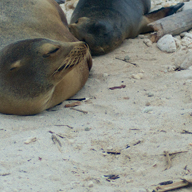
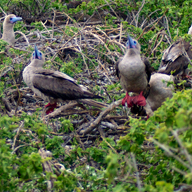
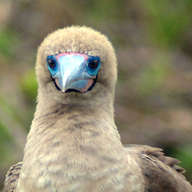
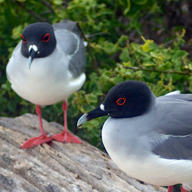
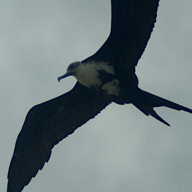

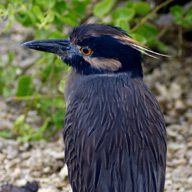

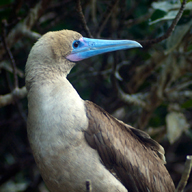
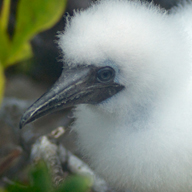

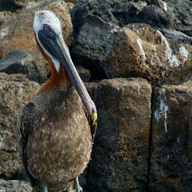
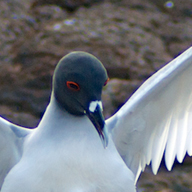
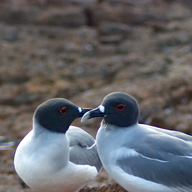

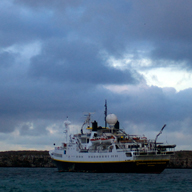
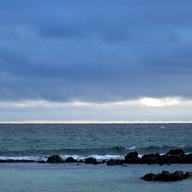
08/29/2013
Thursday was our first and only real “beach” day, where we actually just sat on a beach in the sun all morning. Conveniently, it was also the only morning on the entire trip that was full-on sunny and not overcast. About an hour into sitting on the beach and reading, I got bored so threw on my wetsuit and fins and went snorkeling again (that was another option), so there will be some final underwater pics once I get around to picking up the discs from the photo lab. Morning beach was the island of Bartolome.
In the afternoon, it was back in the Zodiac for a ride around Sombrero Chino (chinese hat), named for the fact that it…looks like a chinese hat. Very original. This is the home of penguins(!). Galapagos penguins are extremely endangered, and there are only about 1200 remaining. but we got to see a few, diving in the water, climbing out of the water, and looking off into the distance like champions. Plus a few other already familiar animals.
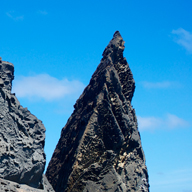
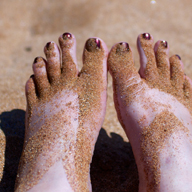




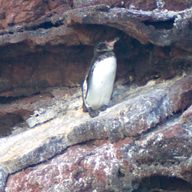

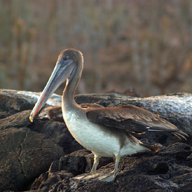
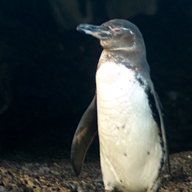
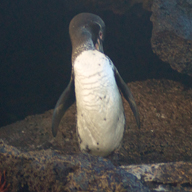

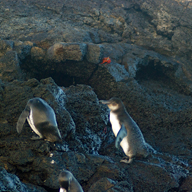


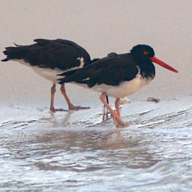

08/27/2013
On Wednesday, the ship remained near Santa Cruz, but on the other side of the island, where we went to “Cerro Dragon” (or Dragon Hill), home to the native land iguanas, who were almost extinct before the Darwin foundation and the galapagos national park service helped restore the population through a captive breeding program (which is now over – there are only three land iguanas remaining at the Darwin research station). Our second stop of the morning was snorkeling at guy fawkes island (again, pictures to arrive later).
In the afternoon, we went to another portion of Santa Cruz known as “el eden”, and went for Zodiac rides along the water and looked for sharks.
In the evening, we took a sunset sail around Daphne Major, the site of evolutionary research on Darwin’s finches for the past 40+ years by Peter and Rosemary Grant of Princeton University. During their time studying the finches, they have actually witnessed first-hand two small-scale evolutionary changes to the finch population on this island.
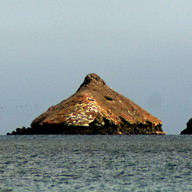


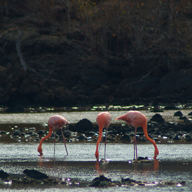


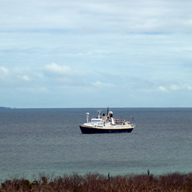




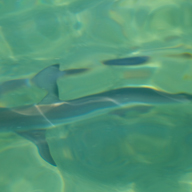
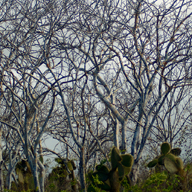
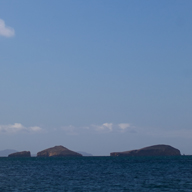
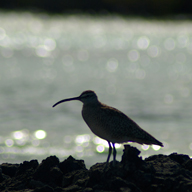




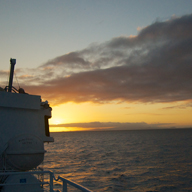

08/27/2013
Tuesday brought us to one of the few islands in the Galapagos that is inhabited by humans, Santa Cruz. 97% of the Galapagos is a national park, and the remaining 3%, including Santa Cruz and San Cristobal (where our airplane landed) is home to approximately 30,000 Galapagenos. Our day took us to the Charles Darwin research station, a local private school that Lindblad helps fund, and a protected giant land turtle migration route in the highlands. No pictures of the school, as I feel a bit odd posting pictures of other people’s children on here, but the Darwin research station is the local home to approximately 80 scientists who study the flora and fauna of the islands. It also functions as a giant rescue site, helping to recover local animal populations that would otherwise have gone extinct. It was also, until he died last year, the home of the most famous giant turtle, Lonesome George. The current most famous resident is Diego, who was repatriated from the San Diego zoo, after it was discovered that he was only one of a handful of living male turtles of his particular sub-species. The center also cultivates local native plant species to distribute to local residents to assist in replacing invasive species that had previously been brought to the island.
The afternoon took us to the highlands which are much wetter and greener, and the place to see giant turtles in their native habitat.





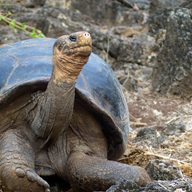


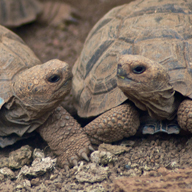
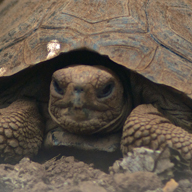
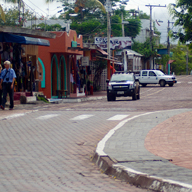
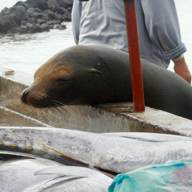





08/26/2013
On Monday, we were at Floreana island, with a morning for snorkeling (and as such, no pictures yet). In the afternoon, we went for Zodiac rides around the island looking for extremely rare Floreana Mockingbirds, which we didn’t find. We did find, however, an extremely out-of-place (and skinny) Juan Fernandez fur seal, from Juan Fernandez island off the coast of Chile, who had clearly gotten lost somewhere and found a resting place on the island. Our naturalist guide for the afternoon, Carlos, actually flipped out at the sighting, because there have only been 3 or 4 ever seen on the islands, and this is the first one he’s encountered. So that was exciting. Other sightings on Monday included swallow-tailed herons, galapagos great egrets, lava herons, and, as always, sea lions.
We also made a stop at an inlet called Post Office Bay, which is a traditional spot for leaving postcards. The tradition involves new visitors looking through the cards that have been left previously and, if they find an address that is near their home, promising to hand deliver the card when they return to civilization. Unfortunately, there was nothing near NYC, so I didn’t get to take anything with me.
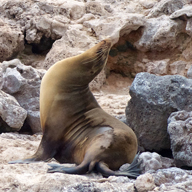




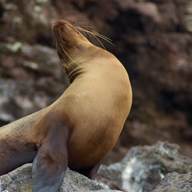

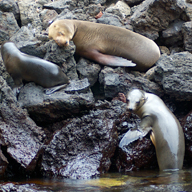
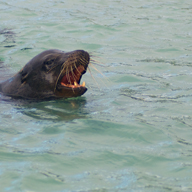
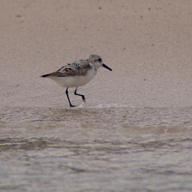







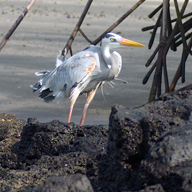





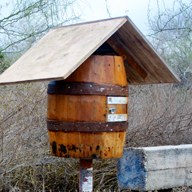
08/26/2013
Day 2 took us to espanola island, which is one of the richest areas for bird life in the galapagos. In the morning we went snorkeling, which will be a separate photo update, as any photos I managed to take were with a disposable underwater camera that I have to get developed. The walk here involved a surface almost entirely composed of lava boulders, which was not the easiest surface to walk on, but it was totally worth it. Animals include marine iguanas, albatrosses, galapagos doves, swallow-tailed gulls, galapagos hawks, lots of boobies (nazca and blue-footed), and, of course, sea lions.




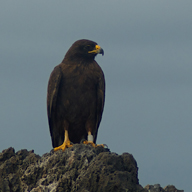




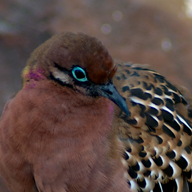
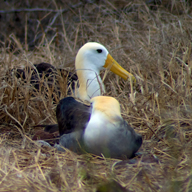

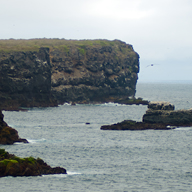








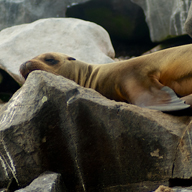





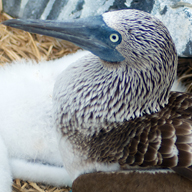
08/25/2013
The only way I’m going to be able to do this with any sense of organization is going to be to break these entries up by day. So…after spending the day flying to Guayaquil, Ecuador, on Friday August 16th, we actually made our way to the Galapagos (and our floating home, the Lindblad/National Geographic Endeavour) on Saturday. The morning was consumed with flying to San Cristobal, transferring to the boat, and figuring out our rooms and whatnot, but by Saturday afternoon, we were sent on our first disembarkation, a short hike at Cerro Brujo (on San Cristobal) and checking out the beach. This would the last day for a few days that we would see any humans other than those traveling with us.
This was quite possibly one of the best trips I’ve ever been on, and I had an excellent time both on and off the boat. Also, a word of warning. I took over 2000 pictures on this trip. I am making a very serious effort to whittle each day’s batch down to the few that are the best and/or representative of what we saw. I do have a habit of taking 20 pictures of the same thing, so I promise to not post everything. But there will be a lot of sea lions (and other animals repeated on other days). Because they were everywhere.
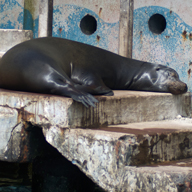
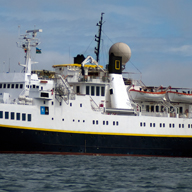
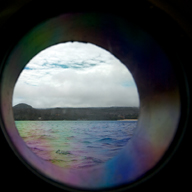





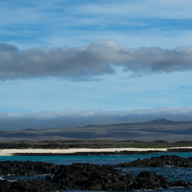
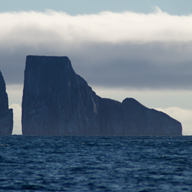





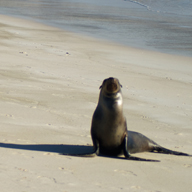
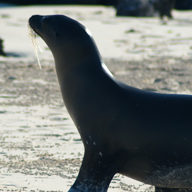


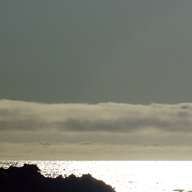
12/22/2004
So I started thinking about where I wanted to go on vacation this year, and I finally decided that this was the year that I was going to take the trip to the Galapagos that I had been thinking about for some time. I tend to not plan far enough in advance, so stuff like this is always booked by the time I get around to making plans. So I started pricing things out, like airfare and figuring out which dates would work best, and then I decided something.
This is the year that I’m going to buy an apartment (or at least the year that I try really hard to find something). As such, that tax refund that normally gets converted into the "really nice vacation" fund is getting dumped straight into the "saving for a down payment" fund instead. I’ll still take some trips, because I’m entitled to the time if nothing else, but I think they’re going to be more along the lines of the parents weekend house, or if I want to go diving, going to a place like the Keys instead of, say, Fiji.
I’m really not complaining – I recognize that this isn’t exactly high on the list of difficult choices that most people have to make. It’s just an adjustment. It’s probably more about adjusting to the idea of spending a lot of money on a very small piece of property, and transferring that anxiety onto not getting to see giant turtles this year.
Now I have to go obsess about the newest listings on Corcoran…





































































































































































